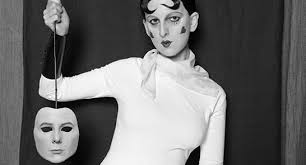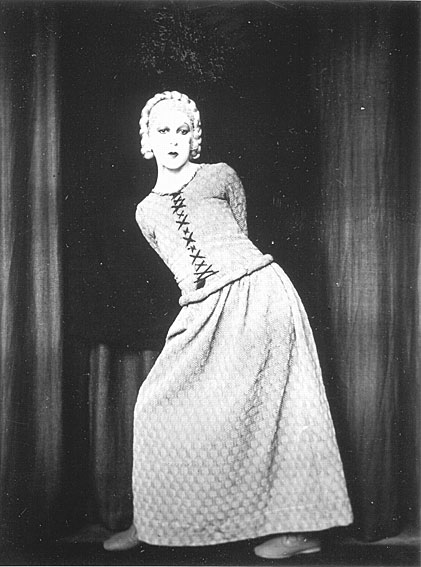Study Visit, 23rd January 2016
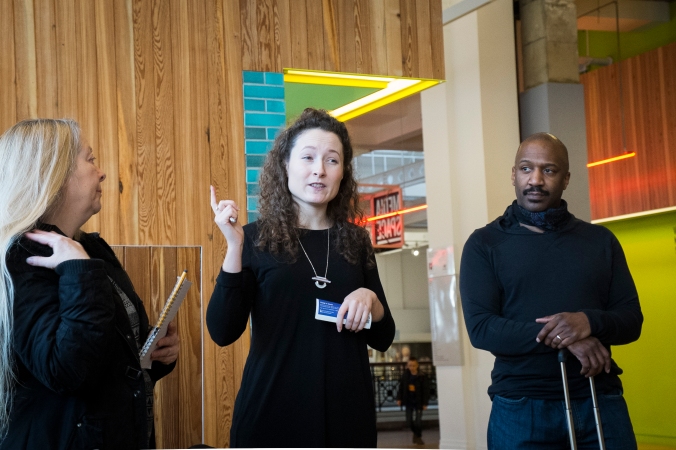
Introduction
This was my fourth OCA study visits and it proved to be an excellent event. Alex Soth’s work was something I was keen to see in person and the organisation of this particular study visit led to a much more immersive exhibition experience than usual. It was a large group of students that attended and this added to the enjoyment and the learning opportunities offered during the day. I say an immersive event because of the way that the visit was structured. We started at 10.45am, with our tutor for the day, Helen Warburton, leading a leisurely but well structured tour through the exhibition. The tour through each of the exhibits in turn was augmented with a range of challenging questions for us all to consider. In addition to looking in depth at the work of the artist, Helen also encouraged us all to consider the structure and planning of the exhibition. Although exhibition organisation was an obvious topic to consider, this did make me think about the work in a different manner. After this we gathered and had a working lunch discussing the the exhibition and our reflections on what we had seen and how it made us feel.
This was then followed in the afternoon by a second tour of the exhibition, this time led by Kate Bush the exhibitions curator. This provided an additional and different perspective on the work and also offered a direct link to some of the artists thinking and decision making about the show. I felt better prepared to make the most of the curators tour because I had already looked at and reflected upon the work in the morning. This second tour augmented my understanding of Soth and his work.
We then concluded the day with a really engaging discussion and debate led by Helen that allowed for further layers of meaning to be considered, indeed revealed. In many respects it was an exhausting and long day but I travelled home feeling very fired up about the work I had seen and also with ideas for developing my own work in my somewhat idiosyncratic journey to try and find this illusive notion of personal voice!
Although a voice in my head is telling me I am becoming a bit of a broken record, I do need to say that this short review and reflection upon this OCA study visit doesn’t really do justice to the learning that this event afforded me.
I also need to note at that this stage that following the exhibition I have invested quite a few nights of further research into Soth and his work, in particular looking at a number of interviews and his motivation as an artist and lectures he has given so that I can gain a deeper understating of his work. This was very much in response to the motivating effect that the OCA visit had on me, not just in looking at the work that hung on the walls of the gallery space but also the excellent discussion and dialogue with other students at the event.
I am not sure who reads this blogs beyond me and my OCA tutor, but if there are any new OCA students reading this entry I really do want to extol the virtues of the study visit and the opportunity to discuss, reflect and debate the work at an exhibition with other motivated and engaged OCA students, it is a feature of the OCA that I really enjoy.
Exhibition context
Making a direct reference to Frank’s ‘ The Americans’ Soth traveled across America making the work in this exhibition. The sum of its parts says something unique and also telling about the state of America and although it has not been made explicit in anything I have read or researched, this work is an ‘insiders’ view so to me is fundamentally different to the work of Frank in the ‘The Americans’
To my developing eye the work weaves between documentary, survey, landscape, portraiture and fine art creating and engaging and thought provoking images whose meaning is well beyond the merely pictorial.
The title of the exhibition ‘Gathered Leaves’ takes its title from the epic Walt Whitman’s epic poem ‘Song of my self’, this was a reworking by Whitman of an earlier work. Gathered leaves is a playful and ambiguous title and might refer to images but also pages in book, indeed a photobook may be referred to as gather leaves? In the same way Whitman reworked his poem over decades, Soth revisits recurrent themes distilling more and more about the american condition and the state of the nation. It is as much a sociological exploration as it is a visual one.
The exhibition was spread over four distinct spaces, each self contained and covering the the four bodies of work that make up the exhibition, Sleeping by the Mississippi, Niagara, Broken Manual and Songbook. Soth is clear that this is not a retrospective, suggesting to Brad Feuerhelm in his interview for American Suburb X that he is too young to have retrospective. Kate Bush ,Curator of the exhibit refereed to it a s ‘mid career, review. There is a real sense of progression not only in Soth’s development as an artist but also in his approach to sharing working. All of the exhibition rooms contain display cases with artefacts (maquette’s and finished photobooks) charting the development of Soth’s visual ideas and themes.
This is important because Soth himself suggests that the photo book is the ultimate medium to transmit work. In the interview with Feuerhelm he suggests:
“but still the book is kind of the ultimate container, shows come and go the book lives on”
Sleeping by the Mississippi
Sleeping by the Mississippi is a haunting collection of images that to me were filled with paradox and ambiguity. It is perhaps an example of landscape photography as metaphor but also as biography. Soth produced the work through a fairly epic road trip following the path of the Mississippi, which starts in the north near his home town and ends up more than 2000 mile later reaching the sea at the Gulf of Mexico. The work tells of his journey and engagement with people along the way. To european observers like myself, the Mississippi conjures up notions of the deep south, so this was immediately challenged by the opening images which are of snow covered landscapes of northern states in winter.

An immediately visible irony is that the river rarely appears in the pictures. Exploring the themes of religion, dreams, people and places along the way, the images were all quite beautiful and technically excellent. Shot with a 10×8 view camera the images in the gallery all looked to be predominantly 20×24 framed colour prints river which rarely appears in any of the images.
Soth’s engagement with people comes through strongly in this work, in part perhaps through the slow and intensive process of using a large view camera. He needed to engage with the subjects to gain their trust, not least so that they were patient through the time it takes to prepare and make an image with a view camera. although there is a wide range of images, Charles Lindbergh’s bed( there are many images of beds and couches), Johnny Cash’s childhood home, convicts in a work detail working on the roadside and individuals who have shared their dreams in writing with Soth as part of the project.
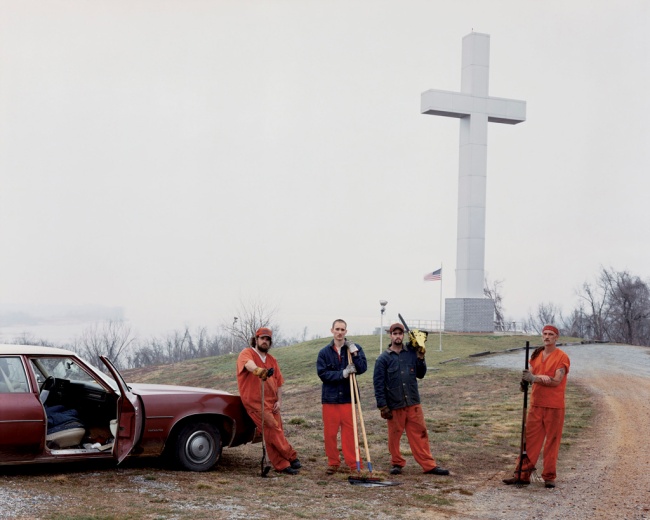
- Copyright Alec Soth
A large vitrine in the centre of the gallery displayed various iterations of the photobook of the exhibit. This was particularly engaging because the contents ranges from the artist original Zine like machetes to very reversions of the final print volumes. It was really good to see how the work had developed. This first gallery also proved to be an excellent introduction to the work Soth and good preparation for what was to come next galleries.
Niagara
The next gallery contained ‘Niagara’, Soth’s study of this settlement on the Canadian border famous for its falls and cheap wedding motels. Described in the exhibition notes as the location of ‘spectacular suicide and affordable honeymoons’.
Niagara was created over 7 visits by Soth to Niagara Falls and its surrounding areas. The location again suggests contrast and contradiction, it being a place where people go to get married and also to commit suicide.
That said the first thing that struck me though about this work was the huge jump in scale when compared to Sleeping by the Mississippi. The full effect of Soth’s use of a 10×8 large format really jumps out. The prints were all on grand scale with all being many feet in dimensions.
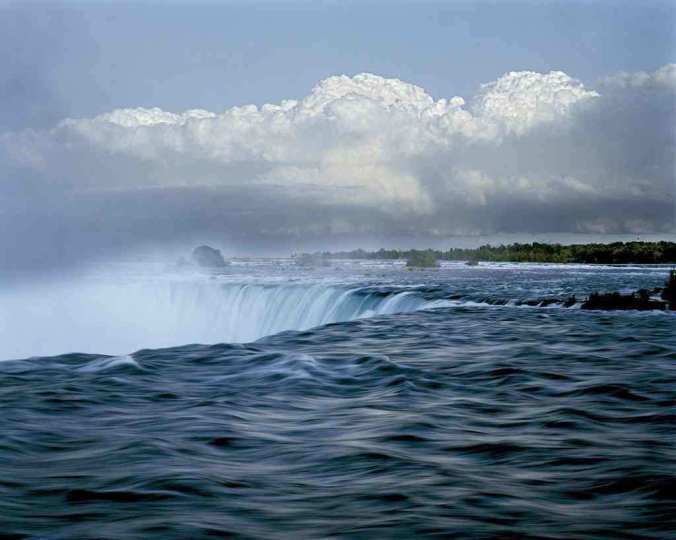
Copyright Alec Soth
Central in the gallery was a picture of the falls taken from the tourist viewpoint and reflecting the postcards sold at the location and many peoples view of this location. It is a beautifully composed classic landscape image right down to the minutiae of detail in the clouds.
Many of the other images contrast with the grandeur of the falls, for example ‘Impala’, which I imagine is the name of the somewhat tacky looking motel, more reminiscent of a Watford industrial estate than a dream wedding location. Soth is making a statement here about how trite this place is yet people for there for what is sometimes described as the happiest day of their lives!

There were a lot of images of people, brides, couples, a swimmer, a very gaunt and a sad looking girl with her baby. If it was his intention to create a sense of a place of sadness but he achieved this. I think it was in this exhibit that he really anchored his ability to create a real sense of the emotions and culture of a place and whilst he may have been using landscape as metaphor, he was also in my opinion using landscape to share some deep cultural insights. In addition to the melecholoc feel of some of the images there was also something almost whimsical, again demonstrating his ability to create a sense of place, with a capacity to go beyond mere location and explore culture, emotions and the ives of those that pass through a place.
A vitrine in the centre of the gallery space had a strange collection of artefacts, maquette’s and love letters that the people he had met shared with him. It was clear from the display case contents that Soth is able to really gain trust and engagement with the people he photographs, they give him far more than just their likenesses on film!
BrokenManual
This was the third element of the exhibition and to me represented an altogether darker series of work. Initially inspired by the flight and subsequent fugitive in hiding story of Eric Rudolph, the Olympic Bomber, Soth began to explore individuals who took themselves ‘off grid’ and into the wilderness. America still has space enough for people to hide and this work explores many aspects of this fact.
There was a much darker feel to this work and this was also reflected in the subdued lighting of the exhibition space, bright sptlights illuminated the works isn the darkened gallery.
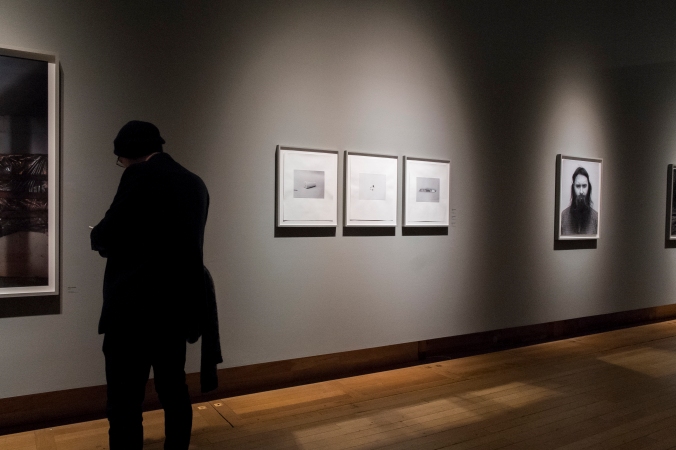
During his research Soth came across online communities of survivalists, individuals and groups, living on the margins or wilderness and certainly beyond american mainstream society. His subjects ranged from hermits, religious recluses, white supremecists, marginal and to some extent broken and troubled individuals. Soth also explored the written and online manuals and advice available to support those who want to live ‘off grid’, even creating a survival manual himself.

Copyright Alec Soth
Much of the work was again on a very larges scale with the beauty of his very effective use of large format film shining through, even when the subject material was more troubling. It was again clearly evidenced that he engaged with his subject at quite a deep and meaningful level and I couldn’t help thinking there was some real risk in the body of work, given that some of those he made images of were frankly quite dangerous!
The vitrine in this space contained an intriguing collection of artefacts reflecting both research and engagement with this topihe exhibit is a collection of large scale works that mix environments portstaure with sense

I was troubled by this work but also drawn to it, it appears to me that this body of images and artefacts, like the previous exhibits, provides strong evidence of Soth’s ability to peel back the layers of contemporary society, using his camera as a tool, to make meaningful statements that transcend the pictorial content images themselves. Frankly, I was really moved by Soth’s skill, technical competence but most of al his insight.
Songbook
This was the gallery and exhibit of the show. It was also very different. Firstly although it retained the giant snake of the previous two galleries it was all in black and white. Also it was made digitally. Mimicking the news style photography. Soth had been a newspaper photographers in the early part of his career. the work explores the nature of truth and some of the text connected with th images come form the songs that were part of American culture in a time before rock and roll.

Copyright Alec Soth
Although there is a very journalistic feel to many of the large images there was something quite artificial about them too, perhaps it was the very quirky and apparently posed subject matter of some of the images.
I did struggle somewhat with this part of the exhibition, in part because it didn’t have the dramatic beauty of the earlier works in the show, but also perhaps because I found less coherence with this work and the other three exhibits. I fully accept that this is about me though rather than the work.
There were also the mini newspaper publication that were aprs of the exhibit, set out in vitrines and produced in partnership with a print journalist friend. The overall effect t me was something helpfully mocking about the print media and its relationship with truth. As stated though I found this work the hardest to read, but none the less engaging.
Some thoughts on the nature of this exhibition
During the curator led tour of the exhibition, Kate Bush referred to Soth as being a very generous artist. This was a direct reference to the contents of the vitrines in each of the exhibition spaces. Soth was very open about his book making process from the genesis of an idea to its final execution. Bush suggested that many artists keep their processes secret, just wanting to share the final work and not the journey to completion. Soth’s generosity is perhaps in part that he sees himself as an educator as well as artist. There is also something about his self confidence that allows this level of sharing. Both also perhaps feels that the work is more than the final images and i was veritably left with the sense of having visited a very intellectually engaging visual installation.
Little Brown Mushrooms is Soth’s publishing company, as stated earlier, the book really is his preferred medium. I couldn’t help wondering about the title. In the days when I looked at the work of Ansel Adams and other f64 group photographers, the pulsihing house with the printing process Adams felt did justice to the zone system created monochrome images he made is called Little Brown. This company still prints his collected works. I couldn’t help wonder was this choice of title a coincidence, may be may be not, it did set me thinking though!
Key learning points from the Visit
- Landscape photography can be biographical
- The notion of the road trip can be slow and evolving project
- Landscape and portraiture can , when skilfully captured, sit well in a singular narrative
- Print Big!! this work stood out for its ever increasing scal
- Photo-books can go through a range of generations before settling on a final form. Soth’s show the development of ideas over time in a very revealing and inspiring manner
- Engagement with subjects yields dividends, Soth’s slow but methodical appraoch engages his subjects allowing him to really get lots fro them
- Immersion in a theme can lead to outcomes that were not originaly intended. Broken Manual in particular demonstrates this.
- Soth, through this exhibition is utterly inspiring!!!
References
Soth, A. (2015) Gathered Leaves-Exhibition Notes
Soth, A. (2015) Gathered Leaves found at: http://mackbooks.co.uk/books/1094-Gathered-Leaves.html (Accessed January 2016)
Video Interview with Soth:
https://www.youtube.com/watch?v=w91iWM_57RU

